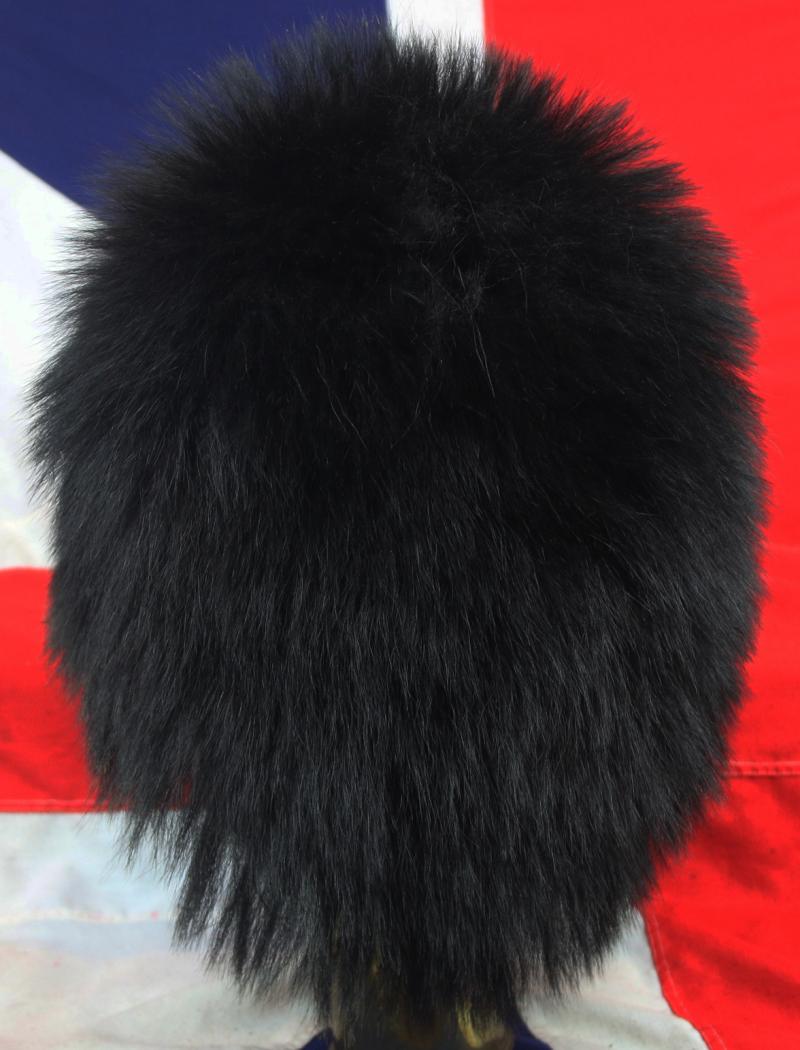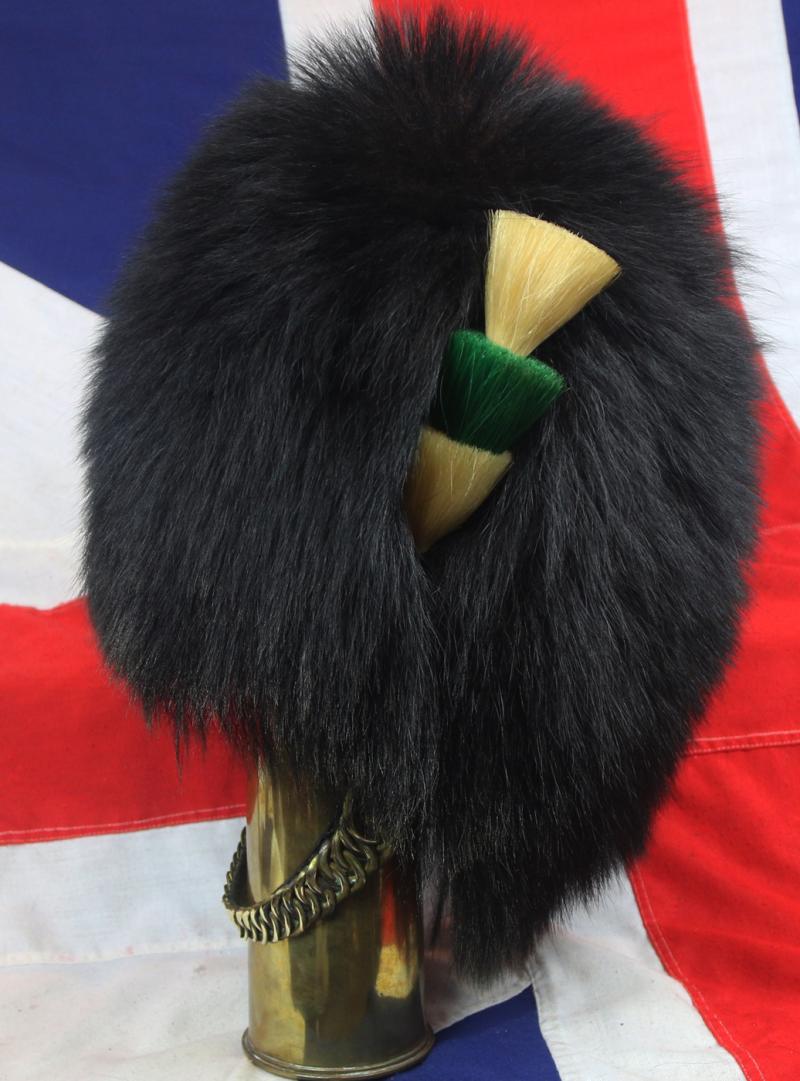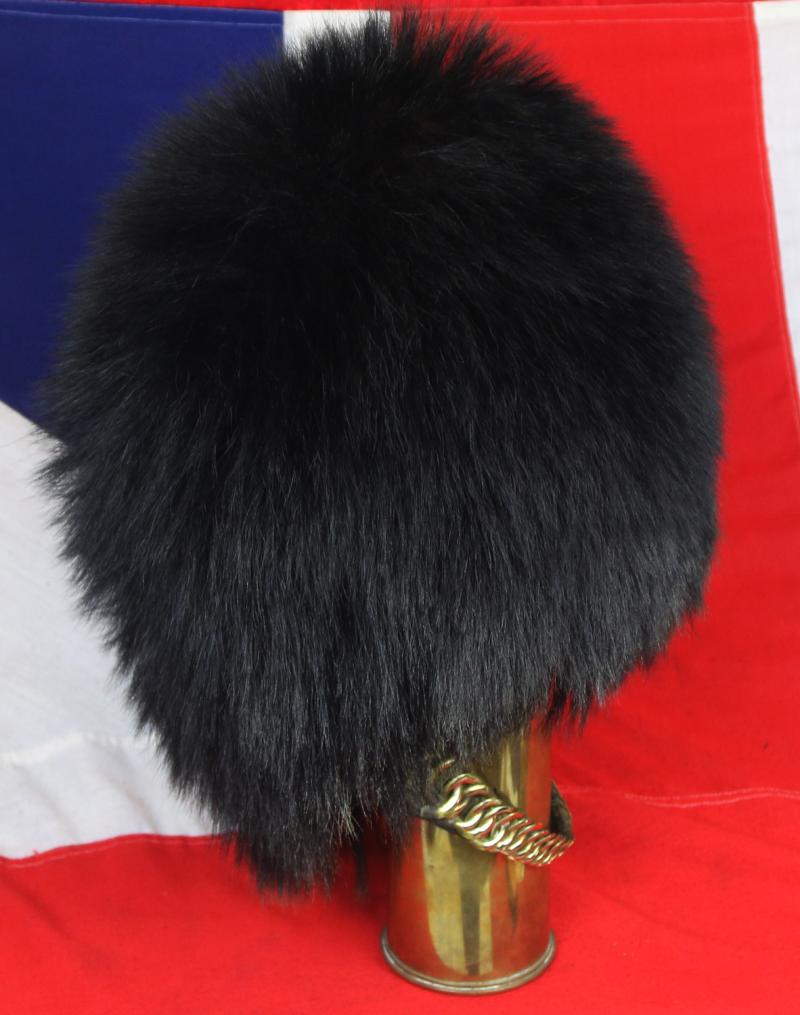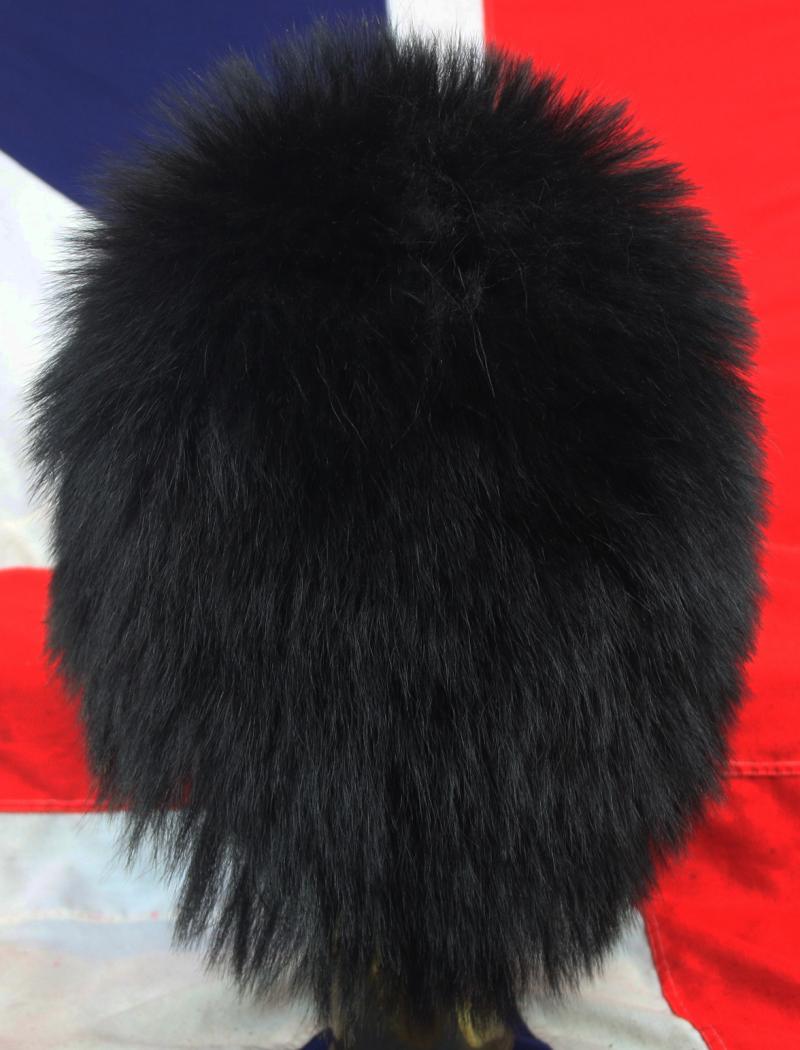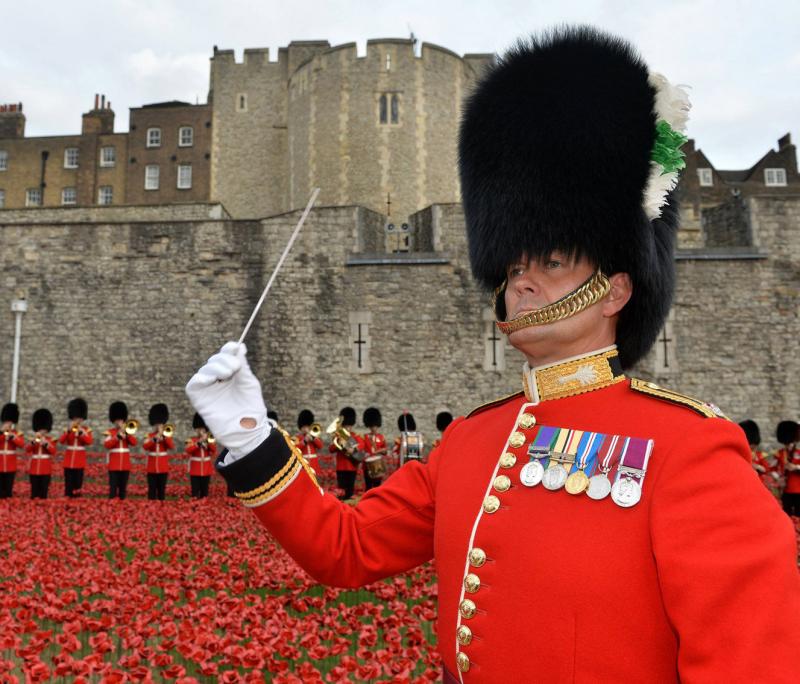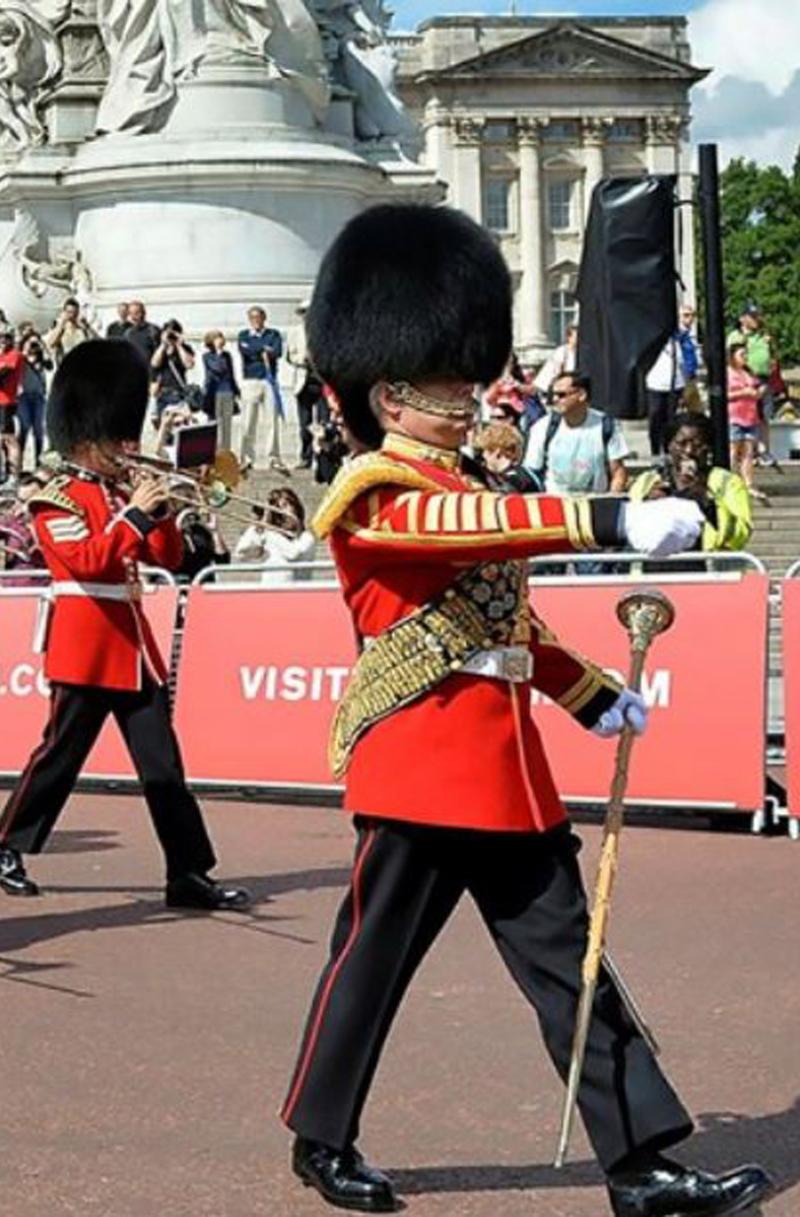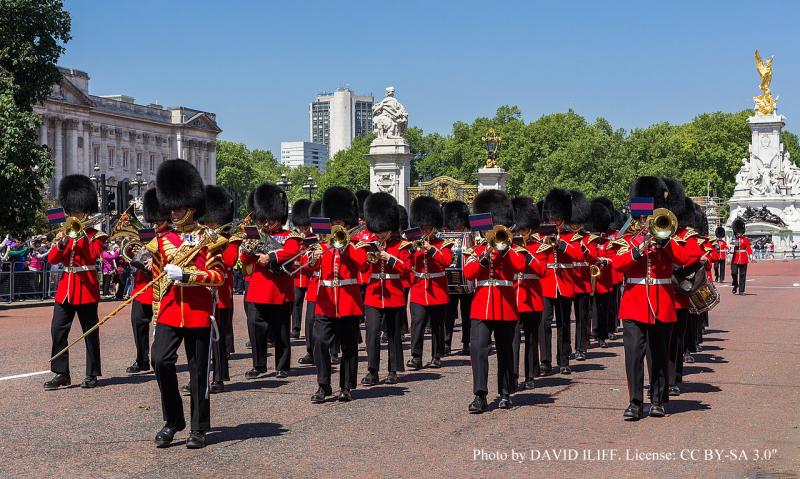A Superb, Original, Her Majesty Queen ELizabeth II, Household Division Drum Major's Welsh Guards Bearskin Cap. In Superb Condition, A Post 1953 Coronation Era, Bearskin, For a Member of The Battalion Staff {Gloriously Fluffy}
A fabulous original Household Division bearskin of the Welsh Guards, in stunning condition, with luxurious fur quality. Original Welsh plume of green and white horsehair.
Perfect interior cane frame and complete leather lining with all the tongues in perfect condition. Maker label to the interior.
The Welsh Guards was raised on 26 February 1915 by order of King George V, in order to complete the national complement of regiments of Foot Guards identified with the countries of the United Kingdom.
On inception the Regiment took its place alongside the English Grenadier Guards and Coldstream Guards, the Scots Guards and the Irish Guards. Two days later, the Battalion mounted its first King's Guard at Buckingham Palace on 1 March 1915 - St David's Day.
The title "Drum Major" is an appointment, not an ordinary or regular military rank. The Drum Major is always referred to and addressed as "Drum Major" or "Sir" this is because as a Drum Major of the Household Division, a Royal Warrant is awarded as a “Drummer to the Household” and a member of Battalion Staff.
The insignia of the appointment is four inverted chevrons worn on a wrist-strap whilst in shirt-sleeve order, or four inverted large chevrons worn on the uniform sleeve, surmounted by a drum.
Military Drum Majors utilize a ceremonial mace for giving commands while marching.
A bearskin is a tall fur cap derived from mitre caps worn by grenadier units in the 17th and 18th centuries. Initially worn by only grenadiers, its usage was extended to several other military units in the 19th century. The bearskin cap continued to see use in battle during the mid-19th century, although by the 20th century, it was only used for parade dress. In the 21st century, the bearskin cap is retained by select military units as a prominent element of their ceremonial and full dress uniforms.
The earliest record of a bearskin-like cap being worn by soldiers in Europe was during the mid-17th century, although its widespread adoption did not take place until 1761, when French grenadiers began to wear tall fur caps resembling the Prussian mitre cap. The purpose appears to have been to add to the apparent height and impressive appearance of these troops both on the parade ground and the battlefield.5 These fur caps developed into the colossal bearskin caps worn by the French Imperial Guard. The British Grenadier Guards adopted the headdress after their victory at the Battle of Waterloo in 1815, with other British units and European militaries adopting the headdress in the years after.
The headdress continued to see military service during the mid-19th century, with British foot guards and the Royal Scots Greys wearing bearskins in battle during the Crimean War.6 However, by the mid-19th century, the expense of acquiring bearskin caps and the difficulty in maintaining them in good condition led to some military units limiting the use of the headdress for specific occasions. Some units, like the Italian 1st Regiment "Granatieri di Sardegna", eventually discontinued the use of the headgear altogether during that century.
The British Army continued to use the headdress during peacetime manoeuvres until the introduction of khaki service dress in 1902. Immediately before the outbreak of World War I in 1914, bearskins were still worn by several British, Belgian, Danish, German, Russian, and Swedish units as a part of their ceremonial/parade dress. Several units that retired the use of the headdress during the 19th century, including units in Italy and the Netherlands, also readopted it for ceremonial use during the 20th century
Every single item from The Lanes Armoury is accompanied by our unique Certificate of Authenticity. Part of our continued dedication to maintain the standards forged by us over the past 100 years of our family’s trading, as Britain’s oldest established, and favourite, armoury and gallery
Code: 25421
950.00 GBP


